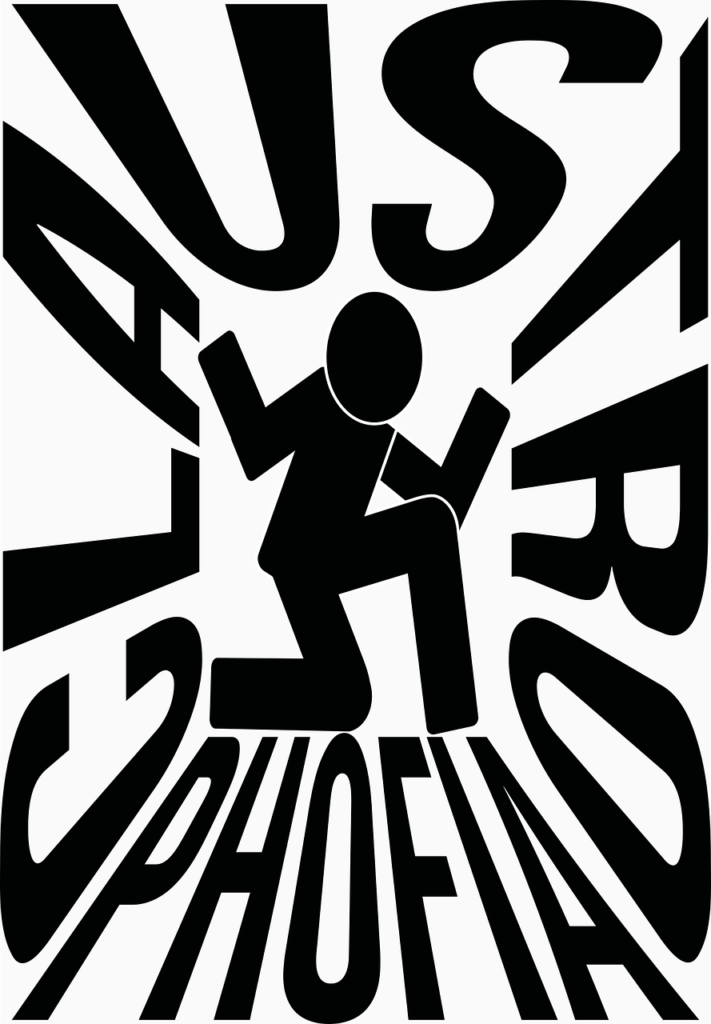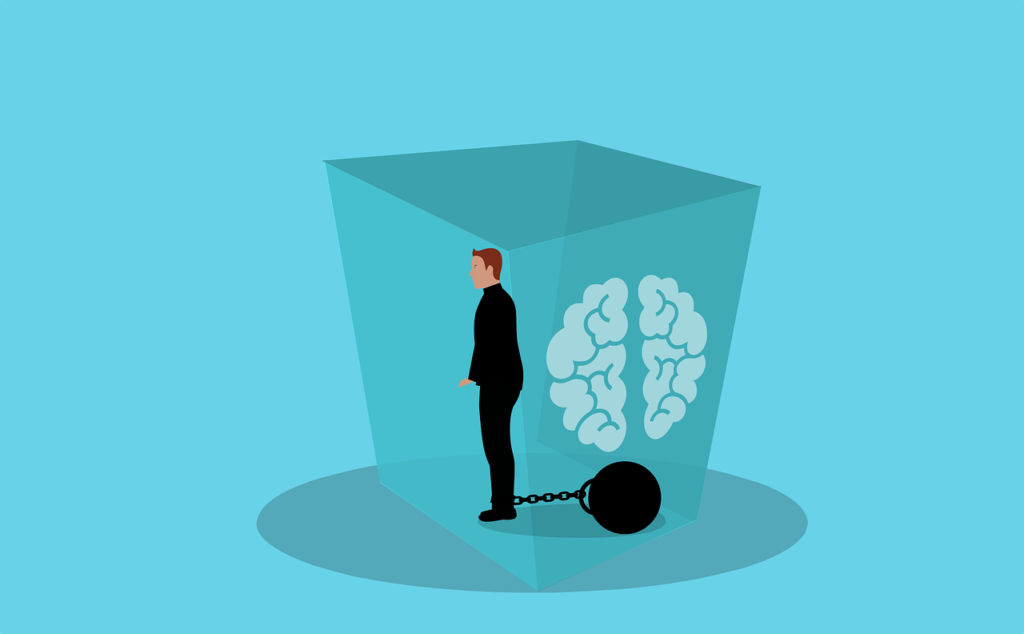Phobias and fears are normal encounters that can affect our lives in different ways. These emotional responses, which can sometimes be overwhelming, include phobias of spiders and heights. We will investigate the definitions, differences, types, causes, risk factors, signs, and symptoms of fear and phobias in this beginner’s guide. In addition, we will discuss how homeopathy can provide a holistic approach to their treatment and the general management of these conditions.

Fear and Phobias Defined
The human experience of fear is fundamental to our survival. A “fight or flight” response in our bodies is a natural response to perceived threats or danger. We are prepared to face the threat or flee from it with this response.
On the other hand, phobias are a type of anxiety disorder in which a person has a strong, irrational fear of a particular thing, situation, or activity. Phobias, in contrast to normal fears, frequently result in avoidance behaviors that significantly disrupt a person’s daily life.
Understanding the Difference
The irrationality and intensity of fear and phobias are the primary distinctions between the two. Phobias involve an exaggerated, irrational fear of something that may not actually pose a threat, whereas fear is a normal emotional response to a real threat. A typical fear response, for instance, is to be afraid of a growling dog that is about to attack. Cynophobia, on the other hand, is a phobia in which you have a strong fear of harmless dogs even in safe situations.
Types of Fears and Phobias
Phobias and fears come in a variety of forms and can manifest in numerous ways.
1. Acrophobia, arachnophobia, and aviophobia: These are examples of specific phobias, which involve an intense fear of a particular object or situation.
2. Social Phobia (Social Anxiety Disorder): This phobia causes people to avoid social situations because they are afraid of being judged by others.
3. Agoraphobia: Agoraphobia is characterized by avoiding crowded places and public transportation due to a fear of being in situations where escape might be difficult or embarrassing.
4. Claustrophobia: This is a severe fear of enclosed environments like elevators and small rooms.
5. Emetophobia: Emetophobia is the fear of passing out, which can cause people to avoid certain foods or situations.
6. Blood-injection-injury Phobia: People who suffer from the blood-injection-injury phobia experience fear or fainting when they are exposed to blood, needles, or medical procedures.
What Causes Fear and Phobias?
Phobias and fear can have multifaceted causes, frequently resulting from a combination of psychological, environmental, and genetic factors. The following are some typical causes and contributing factors:
1. Genetics: Having a family history of anxiety disorders can make it more likely that someone will develop phobias and fears.
2. Traumatic Experiences: A phobia can develop after a traumatic experience with a particular object or situation.
3. Learning: Phobias can be influenced by observing someone else’s fear or having a bad experience with a certain object or situation.
4. Irregularities in the Brain: Irregular characteristics in synapses, for example, serotonin and norepinephrine can add to the improvement of uneasiness problems, including fears.
5. Childhood Experiences: Phobia development can be influenced by early life experiences like a lack of exposure to certain situations or overprotective parenting.
Risk Factors for Fear and Phobias
Although phobias and fear can affect anyone, certain factors may increase a person’s likelihood of developing them. These risk factors include the following:
1. Heredity: Anxiety disorders or phobias can be passed down from one generation to the next, which can make a person more susceptible.
2. Age: Phobias can emerge at any age, but they are most common in childhood or adolescence.
3. Gender: A few fears, like arachnophobia, will generally be more normal in one gender over the other.
4. Personality traits: Phobias may be more likely to develop in people who are highly neurotic or sensitive.
5. Traumatic Incidents: Exposure to horrendous accidents or mishaps connected with a particular fear can improve the probability of fostering that fear.
6. Substance Abuse: Anxiety disorders, including phobias, can be made worse by abusing substances like alcohol or drugs.
Signs and Symptoms of Fears and Phobias
Perceiving the signs and side effects of dread and fears is significant for early mediation and compelling administration. Some common signs include:
1. When confronted with the feared thing or circumstance, severe anxiety or panic attacks.
2. A powerful urge to keep away from the dreaded item or circumstance no matter what.
3. During exposure to the phobia trigger, trembling, sweating, and a rapid heartbeat can occur.
4. Having an overwhelming feeling of fear or dread.
5. Failure to control the trepidation.
6. The phobia causes significant distress or impairment in daily life.
General Management of Fear and Phobias
A variety of therapeutic approaches are frequently used in the management of phobias and fears. Some general approaches to management are as follows:
1. Psychotherapy: Phobias can be effectively treated with cognitive-behavioral therapy (CBT). It aids individuals in comprehending and altering their fear-related thought processes and actions.
2. Exposure Treatment: Steady exposure to the fear trigger, under the direction of a specialist, can assist with desensitizing people to their trepidation.
3. Medication: To alleviate symptoms, medication, such as anxiety or depression medications, may be prescribed in some instances.
4. Relaxation techniques: These include progressive muscle relaxation, deep breathing, and meditation, all of which can assist in the management of anxiety and panic attacks.
5. Support Groups: Participating in a phobia-related support group can foster a sense of belonging and empathy.
6. Changes in one’s lifestyle: Getting enough sleep, exercising on a regular basis, and eating a well-balanced diet can all help one feel better emotionally.
Homeopathic Remedies for Fear and Phobias
The selection of homeopathic remedies for fear and phobia is based on the individual’s specific symptoms and emotional state. While a qualified homeopath is essential for individualized treatment, the following are some common remedies and their indications:
1. Aconitum Napellus: This herb is used to treat fear and phobias, anxiety, nervousness, and a fear of crowds or going outside. It works best at night or in the evening.
2. Arsenicum Album: Suitable for those with restlessness, fear of death, and a tendency to change places frequently; administered from cold, and most effective in heat.
3. Argentum Nitricum: Recommended for individuals with fear and anxiety, often accompanied by irrational impulses and a desire to jump out of windows; responds well to fresh air and cold.
4. Stramonium: Indicated for fear of closed spaces and an urge to escape, especially in dark rooms or when alone; worsened by bright light and company.
5. Hyoscyamus: Usually given at night or during menstruation, it is used to treat delirium and a fear of poisoning.
6. Ignatia Amara: People who stifle their emotions, experience grief or disappointment, and sigh frequently often benefit from this remedy.
7. Silicea: Perfectionists who are afraid, lack self-assurance, and may have physical problems like cold hands and feet should take Silicea.
8. Phosphorus: People who are anxious, sensitive, and prone to being startled often look to others for comfort and reassurance.
9. Pulsatilla Nigrican: People who are reticent, emotionally dependent, and prone to mood swings may benefit from the Pulsatilla Nigrican.

Conclusion: Don’t be Afraid
Phobias and fears are normal encounters that influence a great many individuals around the world. Understanding their causes, signs, and symptoms is the first step toward effective management, even though they can be distressing. By addressing the underlying emotional and mental factors that contribute to fear and phobias, homeopathy provides a holistic approach to treating these conditions.
In the event that you or somebody you know is battling with phobias or fears, consider speaking to a certified homeopath to investigate the possible advantages of homeopathic treatment.
Reach out to us for a Consultation
For any queries, reach out to us at contact@homeopathic.ai
This blog is for information purposes. It’s crucial to note that while homeopathy is a centuries-old practice with many adherents worldwide, always consult a qualified homeopath or medical professional before initiating any treatment.





